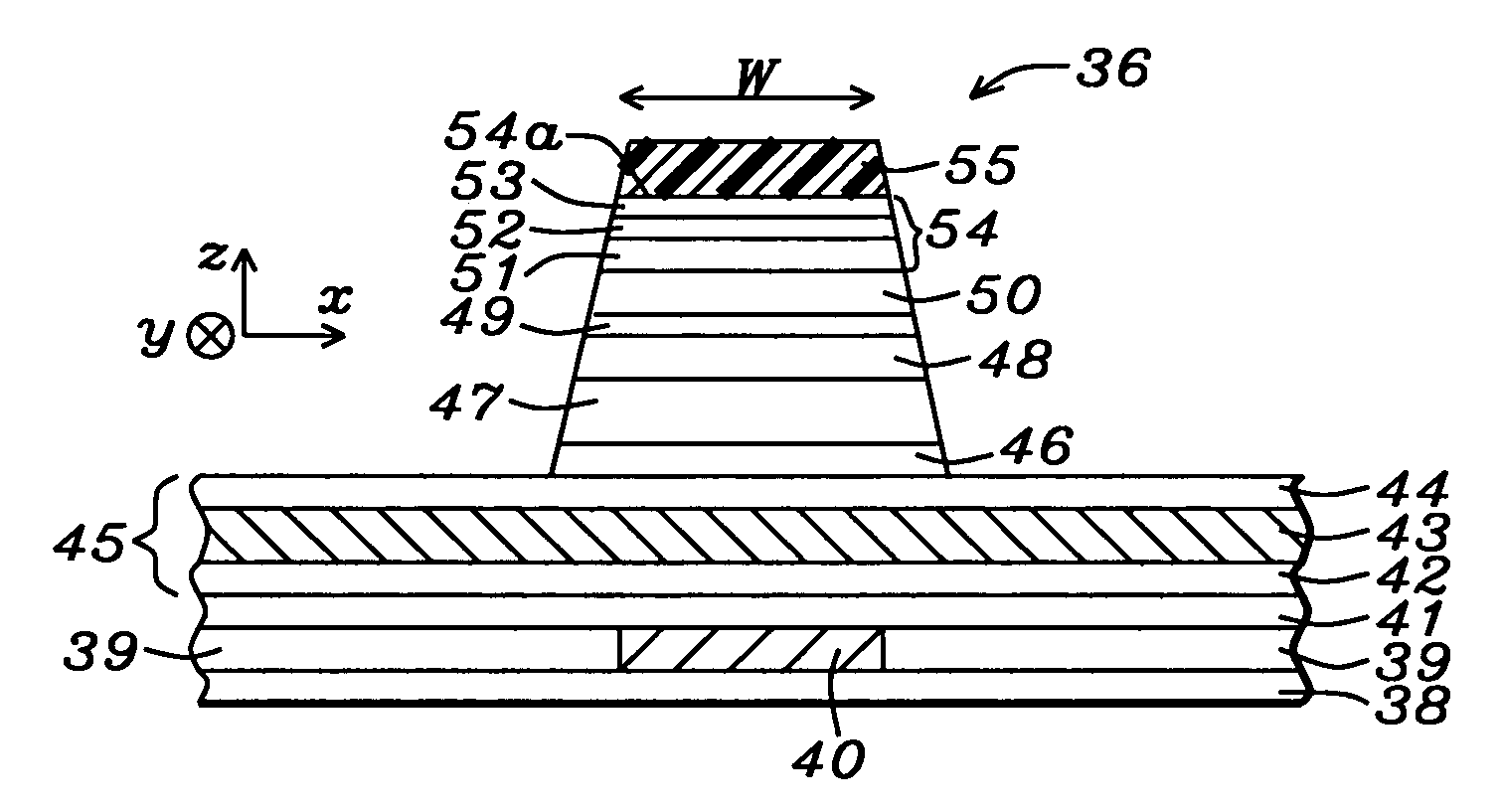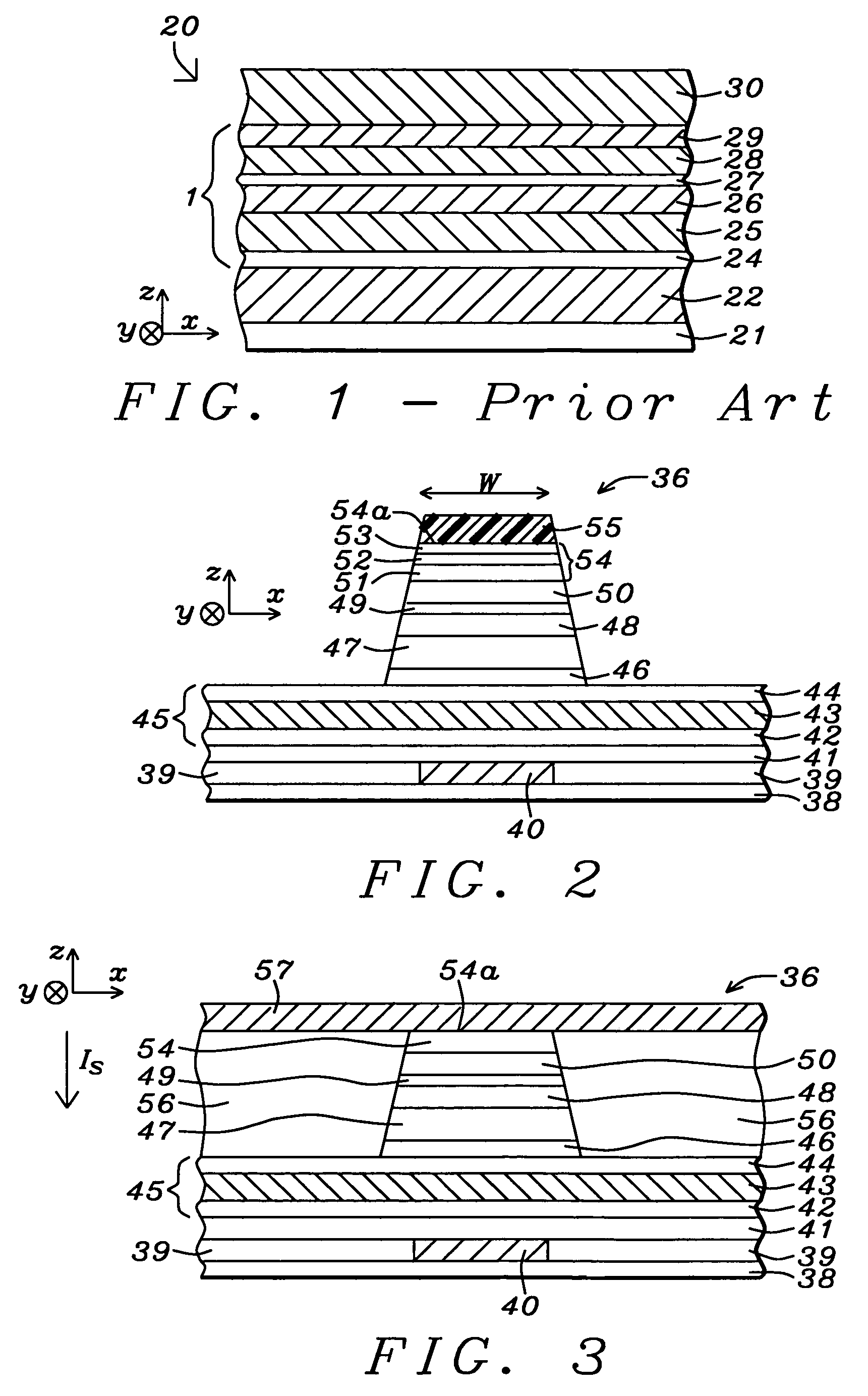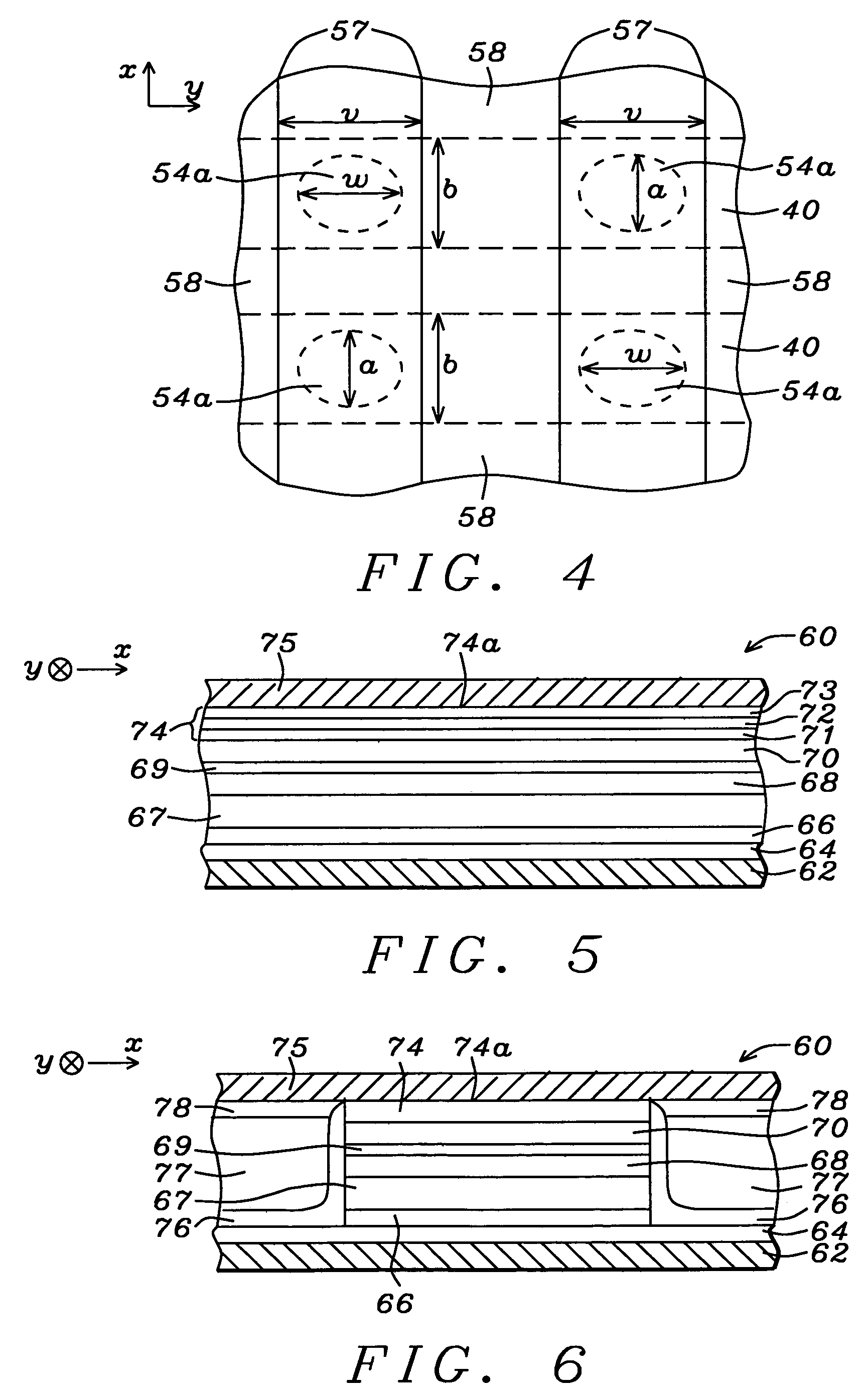Capping layer for a magnetic tunnel junction device to enhance dR/R and a method of making the same
a tunnel junction device and capping layer technology, applied in the field of high-performance magnetic tunnel junction elements and a method of making the same, to achieve the effect of low-magnetization capping
- Summary
- Abstract
- Description
- Claims
- Application Information
AI Technical Summary
Benefits of technology
Problems solved by technology
Method used
Image
Examples
example 1
[0063]An experiment was conducted to determine the magnetic moment (Bs) of 500 Angstrom thick NiFeHf layers on a SiO2 / Si substrate that were co-sputtered using an Anelva C-7100-Ex Thin Film Sputtering System which consists of three 5PVD chambers each having five targets, an oxidation chamber, and a sputter etching chamber. At least one of the 5PVD chambers is capable of co-sputtering. The NiFe target and Hf target were arranged opposite each other at positions 2 and 4, respectively. The magnetic moment of each 500 Angstrom thick film shown in Table 1 was measured with a B—H looper.
[0064]
TABLE 1Bs (nanowebers) of 500 Angstrom Thick NiFeHf LayersNiFe power / Hf powerBs (as-deposited)Bs (annealed)NiFe (reference)10.810.8300 W / 300 Wnonenone300 W / 200 Wnone0.29400 W / 200 Wvery slight0.61600 W / 200 W0.540.89700 W / 200 W3.323.35800 W / 200 W3.473.64
[0065]Based on the Bs measurements, a nonmagnetic NiFeHf alloy, in the as-deposited state, is formed by co-sputtering NiFe(21%) and Hf targets with 300...
example 2
[0066]An unpatterned MTJ stack was formed on a substrate to determine the improvement in magnetic properties realized by incorporating a capping layer formed according to the present invention. In this example, the tunnel barrier layer is made of MgO and the free layer is a 33 Angstrom thick Ni79Fe21 layer. The capping layer has a NiFeHf / Ta / Ru configuration wherein the NiFeHf inner layer is about 25 Angstroms thick, the thickness of the Ta middle layer is 30 Angstroms, and the thickness of the Ru outer layer is 100 Angstroms. A standard capping layer represented by Ru30 / Ta30 / Ru100 was also deposited on the Ni79Fe21 free layer to serve as a reference as shown in rows 1 and 2 of Table 2. After all the films were deposited, the MTJ stack was annealed at 360° C. for 2 hours with an applied field of 10000 Oe. The results in Table 2 were obtained by using a B—H looper and a Capres CIPT (current in plane tunneling) to measure RA and dR / R. The other layers in the MTJ stack are the following...
example 3
[0070]An unpatterned MTJ stack was formed on a substrate to determine the improvement in magnetic properties realized by incorporating a capping layer formed according to the present invention. In this example, the tunnel barrier layer is made of AlOx and the free layer is a 33 Angstrom thick Ni79Fe21 layer. The tunnel barrier was formed by oxidizing an 8 Angstrom thick Al layer. The capping layer has a NiFeHf / Ta / Ru configuration wherein the NiFeHf inner layer is about 25 Angstroms thick, the thickness of the Ta middle layer is 30 Angstroms, and the thickness of the Ru outer layer is 100 Angstroms. A standard capping layer represented by Ru30 / Ta30 / Ru100 was also deposited on the Ni79Fe21 free layer to serve as a reference as shown in row 6 of Table 3. The seed layer, AFM layer, and pinned layer are the same as in Example 2. The MTJ stacks were annealed at 280° C. for 5 hours with an applied field of 10000 Oe.
[0071]
TABLE 3Magnetic properties of NiFe(free)-AlOxMTJs with different NiFe...
PUM
 Login to View More
Login to View More Abstract
Description
Claims
Application Information
 Login to View More
Login to View More - R&D
- Intellectual Property
- Life Sciences
- Materials
- Tech Scout
- Unparalleled Data Quality
- Higher Quality Content
- 60% Fewer Hallucinations
Browse by: Latest US Patents, China's latest patents, Technical Efficacy Thesaurus, Application Domain, Technology Topic, Popular Technical Reports.
© 2025 PatSnap. All rights reserved.Legal|Privacy policy|Modern Slavery Act Transparency Statement|Sitemap|About US| Contact US: help@patsnap.com



